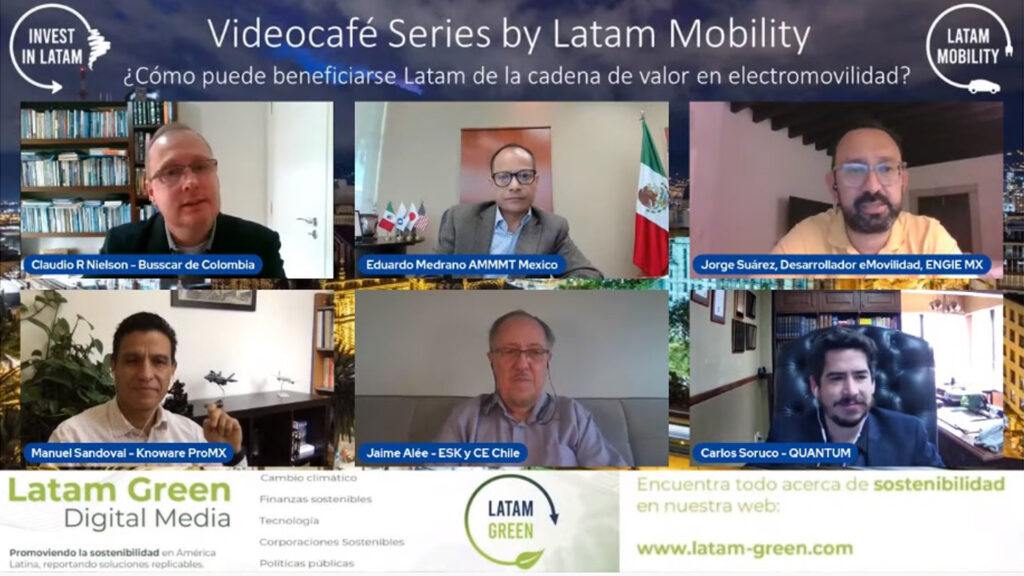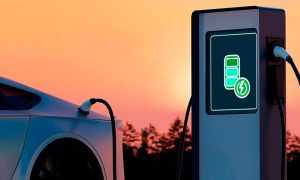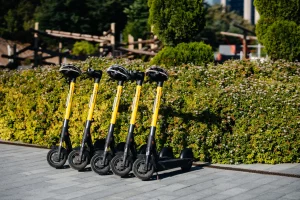Although it is true that the transition to electromobility in Latin America is complex due to the large number of actors that have to come together to make it happen, it also represents a sea of opportunities to apply these new technologies and contribute to sustainability.
In this sense, Latam Mobility organized its customary Videocafé Series, a meeting where leading specialists offer their points of view on different subjects. In this case, the approach was addressed: How can Latin America benefit from the electromobility value chain?
Jorge Suárez, specialist in electromobility and advisor to Latam Mobility, led the forum, focusing the debate on how the region can produce more and better with the use of innovations and the relevant support of government entities in each country, with the right policies. and regulations that encourage the development of electric mobility.
Carlos Soruco, founder of Quantum Motors in Bolivia, highlighted that the company was the first in that country to bet on the production of electric vehicles and revealed that in the beginning no one believed that the development of these technologies was a reality.
“This idea of making electric cars was born and developed from micromobility, not from a traditional car. When we started nobody opened the doors for us, in Bolivia there is no automotive industry and we are the first certified by the SAE ”, he stressed.
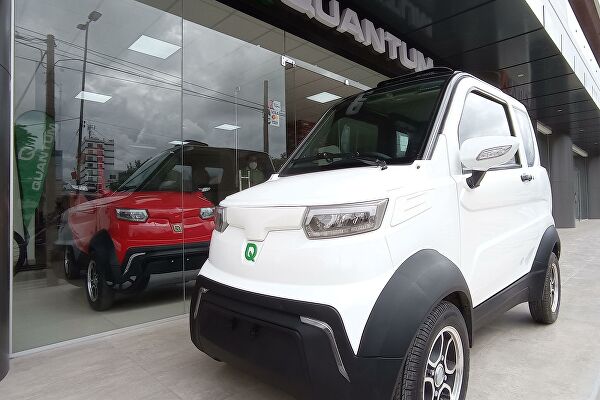
The importance of lithium in the production chain
Soruco assured that Quantum’s work has caused Bolivian legislation to be modified, since previously “the only way to register a vehicle was to present the import policy. We have broken paradigms ”.
He affirmed that Bolivia’s large reserves of lithium, a key material for the construction of electric car batteries, represents an unprecedented opportunity to produce these prototypes. “Lithium has been a trigger for us and it was one of the reasons to move forward. “We enter this business knowing what we want and we exploit the needs of the country and the region.”
“We don’t want to compete with Tesla, ours is a $ 5,900 car. With less than half a dollar it has a range of 60 kilometers. We were born knowing the need that exists and we are entrenched, “he added.
The Quantum Motors executive also commented that another factor that opens the doors for the production of electric vehicles and the development of electromobility in Bolivia is that much more energy is produced than is used, which is why it is an unprecedented opportunity to “change the energy matrix and grow”.
Jaime Alee, SR advisor at the Energy Center of the University of Chile, agreed with Soruco about the importance of lithium in battery production. However, he cautioned that such material alone is not enough.
“The lithium battery essentially contains that aspect, although it is not the most essential. The total chemistry made up of other additives such as cobalt, manganese, among others, complement the battery in terms of power and charging speed, Alee said.

“Lithium represents 3 percent of the value of the battery, while in the active material it represents 25 percent. Cobalt and nickel double lithium, the latter has the electrons that move energy, but it is not true that with it you are the owner of the entire value chain, ”she explained.
According to Alee, there are four fundamental factors for battery development: “The first is the charge density, the second the value of kilowatts per hour, which has dropped from a thousand to 200 dollars and is expected to reach less than 100 dollars. for the year 2025 “.
Another aspect mentioned by the expert is the durability of the battery: “We want to increase the number of cycles and can reach more than 6 thousand cycles duration and more than two million kilometers. The batteries last longer than the vehicle, ”he said.
Finally, Alee, mentioned that the loading speed is “another of the most important challenges. (EVs) are still charged in domestic chargers and to get out of town they need a fast charger. It can be charged in 10 minutes from 40 to 50 km of autonomy ”, underlining that“ everything is associated with the chemistry of the batteries ”.
He pointed out that “there is no way to meet the four objectives simultaneously”, so that up to now, users must “get used to charging their vehicles like they charge their cell phones every day.”
Manufacturing and value chains
Eduardo Medrano, president of the Mexican Association for the Manufacture of Molds and Dies, pointed out that “manufacturing cannot be left behind because it is the source from which the components for the vehicle will be produced.”
“We have to distinguish electric cars from combustion cars by the number of components that are used. Remember that a combustion vehicle takes up a limited version of energy that is generated by the powertrain. In electric motors there are fewer components subject to the level of balance and operation of the car. The central part is generating that energy, ”he explained.
Medrano explained that regarding the differences between an electric prototype and a gasoline one “the issue is not only how much it consumes, but the efficiency with which it is used.” Components such as brakes, suspension and chassis remain because they are very similar, but the trend is that there are much fewer components in the electric ones ”.
“Electric vehicles tend to have lighter materials. Gasoline and diesel are heavier. In the electric ones, aluminum materials are used instead of steel, and the same magnesium that is of high resistance and low weight ”, he added.
Claudio Nielson, representative of Busscar Colombia, also referred to the issue of manufacturing in the Latam Mobility Videocafé Series, stating: “The first challenge was the issue of weight, there is a myth that electric buses must necessarily be made of aluminum. , but when we look at the chassis, the bottom, the axles and the batteries are all made of steel with higher resistance, which makes balancing a cost benefit in Latin America where the road is very heavy unlike in Europe and the United States. United”.
“For safety and quality we made the calculation of the lower part of steel and we found that part of the floor up would be made of aluminum.” He commented that “due to safety regulations, we opted for steel and the difference is 125 kilos. In the end he would not justify doing it any other way because the chassis represents 50 percent, the passengers 30 percent and the excess bodywork 26-27%. In the end, we opted for steel with a new composition that allows reduction and cost-benefit ”, he reiterated.
Digitization and innovation opportunities
Manuel Sandoval Ríos, Director of Koware ProMX, stated that the application of digital platforms will be fundamental for the development of electromobility in Latin America.
He reported that the company he represents is working on the “development of route maps, businesses that exist and those that will exist to establish paths from the strategy.” “We establish the roadmap of industry 4.0 for the country, the digital transformation and we support electric mobility in Mexico City.”
Sandoval noted that Industry 4.0 is about “the introduction of digital technology in manufacturing.” “We are going to have much more impact of digital technologies in electric cars. Making cars will be more like making computers than gasoline-based cars. “
For his part, Medrano, from the Mexican Association of Mold and Die Manufacturing, believes that “the innovation issue is not limited to materials and products, but the way we interact.”
“Today in Latin America we have focused on providing services, cheap labor where we have had to migrate to added value issues and innovation is there too. It is not just about creating products but about doing tasks that add value to this entire ecosystem ”, he said.
Medrano stressed that “we must be innovative in how we are going to innovate, that is a task for businessmen, entrepreneurs and creators. We have to learn to cooperate, we will not grow if we do not cooperate ”.
Public politics
For Soruco of Quantum Motors, the work they have done in Bolivia with electric mobility “has had an impact on regulation.” He mentioned the example of cities such as Cochabamba (City of Bolivia), where the authorities have granted incentives with reductions and tariff reductions.
“In Cochabamba it is convenient to have electric vehicles due to the contamination of the automobile fleet. Everything is changing, we have led to modify the legislation, provoke electrical incentives. Quantum has put Bolivia at the center of electric mobility, it has opened the eyes of the authorities, ”he said.
According to Sandoval de Koware, “we need an efficient industrial and public policy.” “If it is done from a participatory democracy, it will make more sense because all the actors converge on how adaptable and fast to market conditions.”
He highlighted: “More than national policy in the countries, it is about adjusting conditions to local needs. What needs to be done is a policy aimed at developing innovation ecosystems according to the potential of a specific region ”.
According to Alee, an expert from the University of Chile, the abundance of lithium in that country has driven political will, innovation and project financing. “Chile does not have an automotive industry, but there is great progress in the commercial industry and acceptance of innovation with more than a thousand electric buses and a large number of vehicles as last-mile distributors.”
He revealed that: “there is a boom in electric vehicles, people are looking for business models and electromobility is a paradigm that changes. Companies are looking for innovation in ways of selling, demand in mining and energy, we have taken a gigantic step in generation not based on fossils ”.
For Nielson from Busscar Colombia, “the role of the government is not to hinder development, but to open the door for private industry to work. It is a market that is condemning if there is no incentive, ”he warned.
“In Colombia there were electric buses, but no infrastructure and standardization. There must be it so that private industry does not lose the investment. Vehicles must be democratized ”, he concluded.
Finally, Medrano closed the Latam Mobility Videocafé Series, stating that governments should act as facilitators: “At this point we see the bottlenecks. To import we see tariffs that can be managed to incentivize technology. If you want to increase the industry, as a government I create the infrastructure, otherwise it will be very difficult to achieve these types of markets. We must promote the electrical culture, it is a challenge, it does not have to do with money but with the infrastructure it houses, ”he said.
